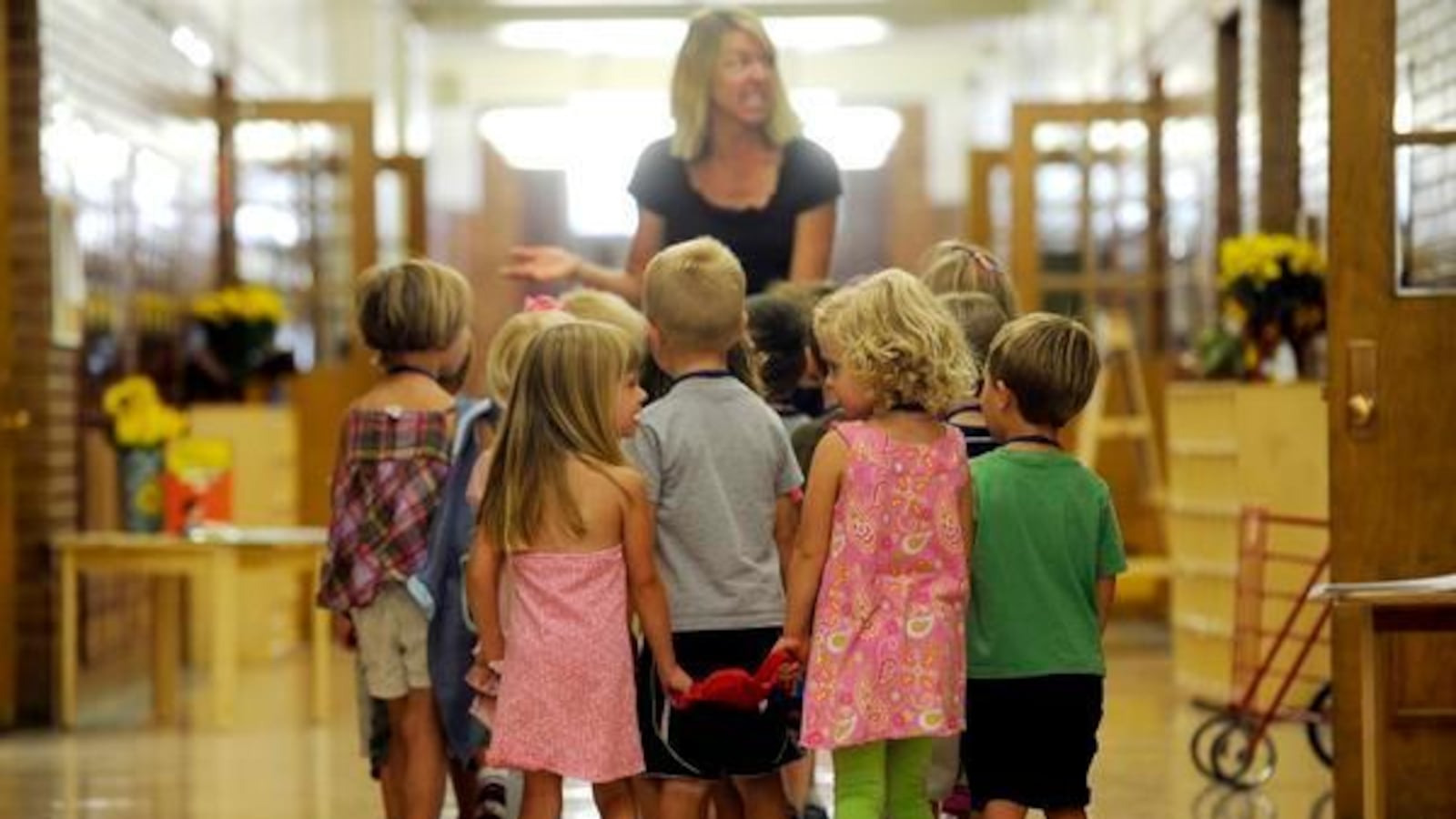To some voters, the question of whether to spend millions of dollars to cool off Denver’s hottest schools — the most torrid of which can reach up to 94 degrees in the early fall — might sound familiar.
That’s because in 2012, Denver Public Schools made the same request.
DPS asked voters that year to approve a $466 million bond issue that included $22 million for heat mitigation at the district’s 79 schools without full air conditioning. Voters agreed, raising taxes to fund a variety of efforts aimed at chilling sweltering classrooms just a year after broiling August temperatures led parents in 2011 to petition DPS to delay the start of school.
This year, the district has signaled it will ask voters in November to approve a $572 million bond issue. Of that, $70 million would be earmarked for heat mitigation at the 79 schools without full air conditioning, which has led some parents and community members to wonder:
So did the money approved in 2012 make a difference?
A few schools are still waiting for the bond-funded fixes. Of those that have gotten them, most have not cooled off much. District officials, however, say they learned what worked and what didn’t, which they used to craft this year’s more ambitious bond proposal.
DPS officials knew from the start that the $22 million from 2012 wasn’t enough to permanently solve the problem, said Dustin Kress, the district’s manager of bond and mill levy programs. They also knew that installing air conditioning in all the schools would be too expensive, he said.
What they didn’t know was what would be the next-best thing. So in the interest of doing something and in the spirit of experimentation, the district decided to dole out the money in an equal manner based on the size of the buildings, Kress said.
“I’ve always heard the 2012 investments referred to as intermediate steps,” said Kress, who didn’t yet work at DPS in 2012. “They were not billed as the solution.”
The money was spent differently at different buildings. For example, this is the breakdown for the district’s six hottest schools.
ABRAHAM LINCOLN HIGH
2012 bond money spent: $636,367
When it was spent: Summer 2015
On what: Projects including improving but not automating nighttime air exchange, which pushes hot air out and pulls cool air in; upgrading cooling equipment in the room that houses the school’s mainframe computer; and adding portable evaporative coolers. (The school did not use the coolers because they deemed them too noisy and cumbersome, said Monica Villarreal, a DPS senior planning analyst.)
SCHENCK (CMS COMMUNITY SCHOOL)
2012 bond money spent: $141,558
When it was spent: Summer 2015
On what: Projects including improving and automating the school’s nighttime air exchange system; installing or upgrading ventilators and/or fans; and adding portable evaporative coolers.
MUNROE ELEMENTARY
2012 bond money spent: $150,575
When it was spent: 2013
On what: Projects including improving and automating the school’s nighttime air exchange system; installing or upgrading ventilators and/or fans; and adding portable evaporative coolers.
DORA MOORE K-8
2012 bond money spent: $133,997
When it was spent: 2014
On what: Projects including adding ceiling fans to classrooms; improving but not automating the nighttime air exchange system; and adding portable evaporative coolers.
SOUTH HIGH
2012 bond money spent: $516,460
When it was spent: 2014
On what: Projects including ventilation system maintenance; upgrading cooling system controls; and improving but not automating the nighttime air exchange system.
EAST HIGH
2012 bond money spent: $638,175
When it was spent: Summer 2015
On what: Projects including adding portable evaporative coolers; adding electrical outlets to plug in more fans to move air throughout the building; and upgrading cooling equipment in the room that houses the school’s mainframe computer.
After realizing that not all the fixes made a big difference, DPS officials dug into the data, dissecting which schools made which upgrades and using temperature data to figure out what worked best.
The answer: automated nighttime air exchange, which DPS officials said they estimated cooled the temperature in the buildings that had it by an average of 3 to 6 degrees.
In that way, the 2012 bond investments were a success, officials said.
“It’s gotten us to a point where we can make an intelligent targeted investment,” Kress said, adding that he sees the 2016 bond “as building on what we did in 2012.”
Elizabeth Stock, DPS senior manager of analytics, added that “because we have a sense of what works, we’re making more differentiated investments.”
The amount of money a school receives this time around won’t be based on its size, she said, but on what it will take to get the school to a target temperature of around 79 degrees.
“Instead of being an equal investment, it’s an equitable investment,” Stock said.
The bond proposal calls for the bulk of the $70 million — $44 million — to be spent on automated nighttime air exchange systems for all 79 schools without full air conditioning that don’t already have them, Kress said. The district found the automated systems work best, he said.
But because that probably wouldn’t do enough for DPS’s 18 hottest school buildings, which had average temperatures between 83 and 94 degrees, another $21 million would be spent on classroom air conditioning for those schools. And $5 million would be earmarked for repairing broken cooling systems. All but two of the district’s hottest buildings serve a majority of low-income kids.
“In 2012, we took the money as far as we could in repairing things that were broken or inefficient,” Stock said. “This time, anything that is broken or inefficient will get replaced. In some of our hottest buildings, it’s a lot of things that are broken that we’re going to fix.”

